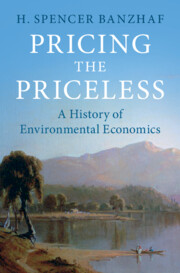Book contents
- Pricing the Priceless
- Historical Perspectives on Modern Economics
- Pricing the Priceless
- Copyright page
- Dedication
- Contents
- Figures
- Acknowledgments
- Acronyms
- Prologue
- 1 Introduction
- 2 Conservation and Preservation
- 3 Do Economists Know about Lupines? Economics versus the Environment
- 4 Consumer Surplus with Apology
- 5 John Krutilla and the Environmental Turn in Natural Resource Economics
- 6 Pricing Pollution
- 7 Lives, Damned Lives, and Statistics
- 8 Benefit–Cost Analysis: Objective or Multi-objective?
- 9 Constructing Markets
- Epilogue
- References
- Index
- Other Books in the Series
9 - Constructing Markets
The Contingent Valuation Controversy
Published online by Cambridge University Press: 19 October 2023
- Pricing the Priceless
- Historical Perspectives on Modern Economics
- Pricing the Priceless
- Copyright page
- Dedication
- Contents
- Figures
- Acknowledgments
- Acronyms
- Prologue
- 1 Introduction
- 2 Conservation and Preservation
- 3 Do Economists Know about Lupines? Economics versus the Environment
- 4 Consumer Surplus with Apology
- 5 John Krutilla and the Environmental Turn in Natural Resource Economics
- 6 Pricing Pollution
- 7 Lives, Damned Lives, and Statistics
- 8 Benefit–Cost Analysis: Objective or Multi-objective?
- 9 Constructing Markets
- Epilogue
- References
- Index
- Other Books in the Series
Summary
As economists took up the task of measuring the demand for environmental services not traded in markets, some chose to substituted survey-based methods known as contingent valuation (CV). Doing so, they could not help but find themselves in the uncomfortable position of self-evidently constructing their observations rather than merely observing them. Apparent anomalies between the constructs and the predictions for economic man led to a fierce debate over the merits of contingent valuation--a debate that hinged on the question of whether economic theory was being applied or tested.
Keywords
- Type
- Chapter
- Information
- Pricing the PricelessA History of Environmental Economics, pp. 200 - 223Publisher: Cambridge University PressPrint publication year: 2023

